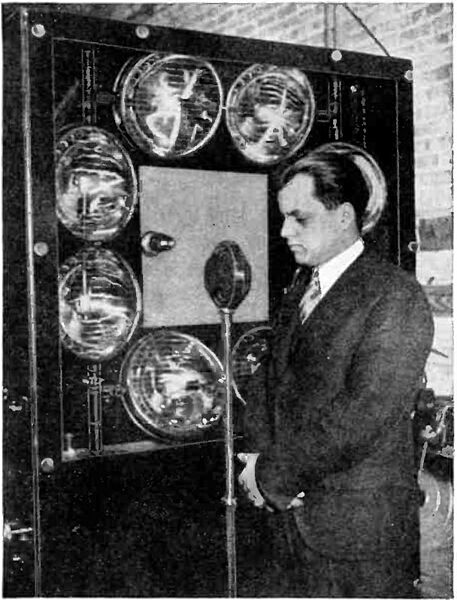
Image: Flying spot scanner 1931

Description: A flyins spot scanner, an early type of television camera used in mechanical scan television systems during the 1930s and its developer, Ulysis Sanabria. During the 1930s, before modern electronic-scan television broadcasting began after World War 2, hundreds of experimental stations broadcast television using this low resolution mechanical techniques. This example is designed to take "head shots" of performers talking or singing. Instead of a camera, the flying spot scanner projects an intense spot of arc light from the lens at center. The spot scans rapidly over the subject's face in a raster pattern. The light reflected from the subject's face is picked up by the eight phototubes in the dish reflectors around the periphery. The phototubes produce a signal which is a record of the brightness of the image where the spot strikes. This is the video signal which is broadcast to the receiver. Broadcasts during the 1930s had low resolution, typically a 60 line frame at 20 frames per second.
Title: Flying spot scanner 1931
Credit: Retrieved March 20, 2014 from H. Winfield Secor, "Sanabria produces 10 by 10 ft image" in Television News magazine, published by Popular Book Corp., New York, Vol. 1, No. 4, July-August 1931, p. 169 on www.americanradiohistory.com
Author: H. Winfield Secor
Permission: This 1931 issue of Television News magazine would have the copyright renewed in 1959. Online page scans of the Catalog of Copyright Entries, published by the US Copyright Office can be found here. [1] Search of the Renewals for Periodicals for 1958, 1959, and 1960 show no renewal entries for Television News. Therefore the magazine's copyright was not renewed and it is in the public domain.
Usage Terms: Public domain
License: Public domain
Attribution Required?: No
Image usage
The following page links to this image:

